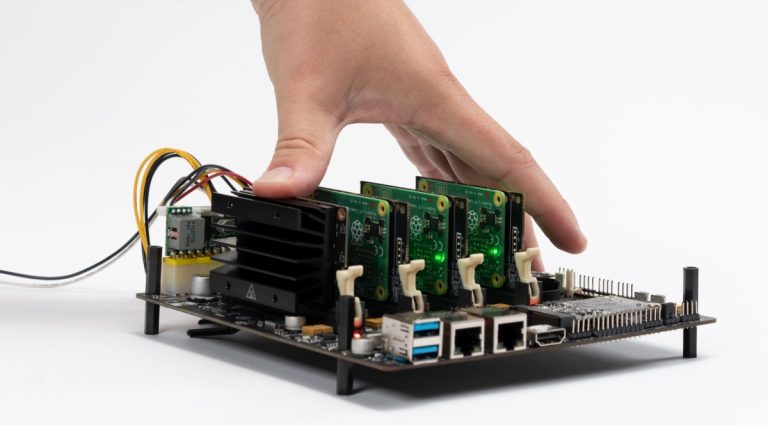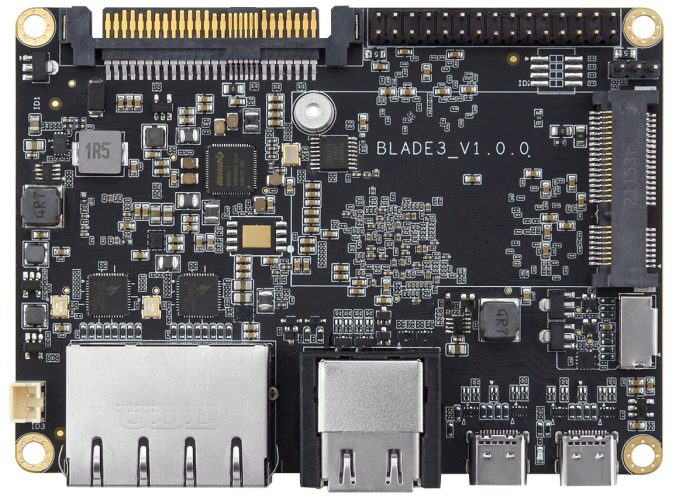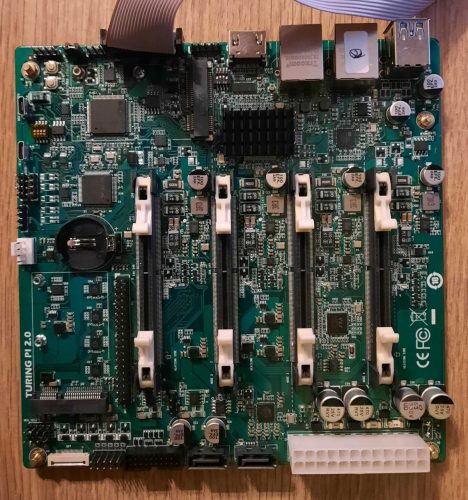a couple of interesting options for home and office

We try to keep abreast of the world of consumer electronics, which can be useful for developers. Quite often we write about mini-PCs, and today is no exception. True, we will not talk about miniature computing systems familiar to many, but about cluster computers that can be used both at home and in the office.
So far, there are not so many such systems, but perhaps in the near future there will be more of them. Today we’ll talk about Mixtile Blade 3 and Turing Pi 2. They’re not exactly new, but before they were only talked about as a project that will be implemented in the future. Now, it seems, both models have reached the finish line.
Mixtile Blade 3

This is a single board computer based on the Rockchip RK3588 processor. The miniature PC form factor is Pico-ITX. Its design provides for the possibility of scaling, i.e. boards can be installed in the chassis, thus increasing the overall performance of the system.
The computer is now available for pre-order on Crowd Supply for $169. That’s the cost of the base model with 4GB RAM, 32GB eMMC internal storage, and passive cooling. If you need a more powerful system, you can purchase a board with 16 GB of RAM and 128 GB of storage. True, its price will be $259.
As far as I can tell, the board’s maximum specs are 32GB of RAM and 256GB of internal storage. Either option is based on a Rockchip RK3588 chip with four ARM Cortex-A767 cores, four ARM Cortex-A55 cores, Mali-G610 graphics, and a neural processor with up to 6 TOP performance.

In addition, any of the options is equipped with the following set of ports and connectors:
- 2 x 2.5Gbps Ethernet
- 1 x HDMI 2.1
- 2 x USB 3.2 Gen 2 Type-C
- 1 x microSD card reader
- 1 x mini PCIe Gen 2 / USB 2.0 interface
- 1 x U.2 interface (supports PCIe Gen 3 x4 and SATA 3.0 )
- 1 x 30-pin GPIO
- 1 x MIPI-CSI connector
The advantage of a single-board device is that it can be used both as a stand-alone device with a board size of 100 x 72 mm, and as a complex system assembled from several identical boards. In order to connect one board to another, you will need to connect the PCIe Gen 3 connectors with a cable.
The capabilities of the computer are not bad. Thus, the throughput of the network channel is up to 20 Gb / s, the memory bandwidth is up to 136 GB / s. The developers claim that the system can be assembled from 75 boards, thus obtaining a 600-core PC with power consumption below 1500 watts.
In addition, the developers also offer specialized cases – however, not for 75, but only for 4 single-board units installed inside. The block costs a lot – as much as $ 239 (without boards), so it is likely that 3D models for the layout of these single-boards will soon appear in the public domain.

The computer supports Android 12 and custom version of Debian 11 GNU/Linux. The source code and software SDK are available for Buildroot and Yocto.
If you are reading our blog, you may be interested in these texts:
→ How to optimize spending on infrastructure rental
→ Ready-made container registry – who needs it and how to use it
→ How we launched a remote cloud region in Uzbekistan
Turing Pi
This project is based on the familiar “raspberries” to all of us. Turing Pi provides for the creation of an ARM cluster computer that can be used as a home server, a server for cloud applications, or a platform for developing distributed applications.
The developers who created this system have previously imagined something similar. But the first version worked with older raspberry models. The new project, Turing Pi 2, supports Raspberry Pi Compute, NVIDIA Jetson Nano, Jetson TX2 NX or Xavier NX modules. Here is a more detailed list of boards:
- Turing RK1 with Rockchip RK3588 8-core CPU, 6 TOPS NPUs and up to 32GB RAM
- Raspberry Pi CM4 with 4-core Broadcomm BCM2711 processor and up to 8GB RAM
- NVIDIA Jetson Nano – Quad-core ARM Cortex-A57 processor with up to 4 GB of RAM
- NVIDIA Jetson TX2 NX with 2x NVIDIA Denver 2 and 4x ARM Cortex-A57 cores, plus support for up to 4GB of RAM
- NVIDIA Jetson Xavier NX with 5-core NVIDIA Carmel processor and up to 16 GB of RAM

The board is equipped with SATA III and Mini PCIe Gen 2 connectors, so you can connect as many storage media as you need to the cluster system. Naturally, you can connect other modules and systems.
The developers claim that Turing Pi 2 is more compact than its predecessor, there are new features. For example, the board supports only 4 modules, although the first model worked with 7 at once. In addition, there was only one 40-pin GPIO instead of seven, plus the headphone output was gone. But audio can be sent through the HDMI port.

Something also grew on the board. So, the board now has two gigabit Ethernet ports, not one. In addition, there are 4 USB 3.0 ports at once. Another advantage is that the board supports external modules, expansion boards like 5G modems, LoRaWAN gateways, and Zigbee.
The board is a standard mini ITX, so it can fit into a compact case that doesn’t take up much space.
The cost of the fee is $219, but the first installments will be sent to contributors who have made a payment on Kickstarter. And then the board will appear in the public sale. This will not happen before the fall of 2022.
In general, scalable systems for home and office are a great option, as they allow you to increase the performance of gaming PCs as needed, and this performance, as the example of Mixtile Blade 3 shows, can be quite impressive.






